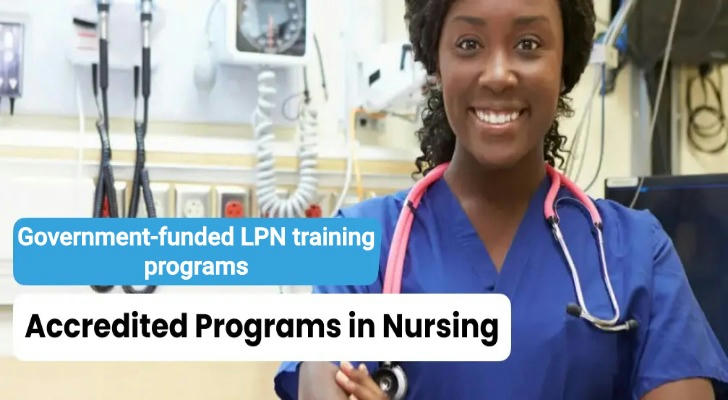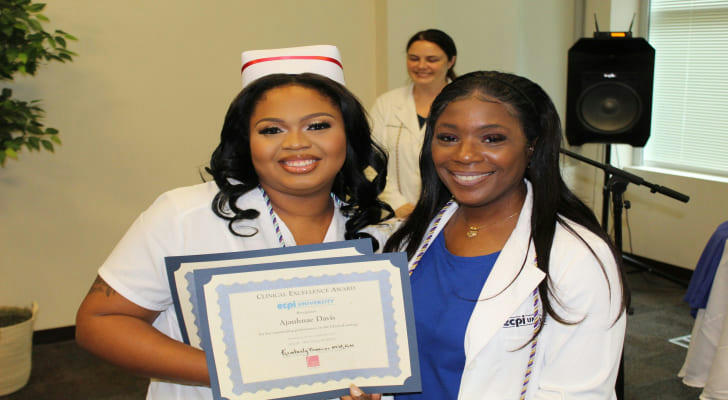Available Government-Funded LPN Training Programs: From Different Ages to Career Starts
Have you ever dreamed of a meaningful, respected career that truly helps others? If you're looking for a stable and practical career path, then a Licensed Practical Nurse (LPN) is the ideal choice for you.

Ⅰ. What is a Licensed Practical Nurse (LPN)?
LPNs, or Licensed Practical Nurse, are a fundamental yet essential position in the American nursing system. They typically work in hospitals, nursing homes, rehabilitation facilities, or home care settings, performing basic nursing tasks such as taking vital signs, administering medications, and assisting with daily care. These tasks are the most direct part of daily patient care.
Ⅱ. How to Become an LPN?
1. Enroll in a Licensed Practical Nurse Training Course
LPN courses often combine online theory with hands-on training, with flexible schedules. In addition to the standard one-year program, some regions offer 4-6 week accelerated training, primarily for students with nursing experience (such as CNAs), focusing on clinical skills development and preparation for the licensing exam.
2. Practical Training and Assessment
Practical training is typically conducted in community hospitals or nursing facilities to ensure students gain real-world experience. After the course, students are typically provided with post-course preparation to help them successfully pass the NCLEX-PN exam.
3. Passing the NCLEX-PN and Obtaining Licensure
The NCLEX-PN is the uniform licensing exam for licensed practical nurses in the United States. Passing the exam allows students to legally practice in their state.
III. Learning Advantages for Different Age Groups
Young People Aged 18-25: Fast learners, promising future career development opportunities, and a good foundation.
Professional Group Aged 26-40: Suitable for those seeking a stable career in healthcare, with a flexible curriculum.
Over 40: Many programs welcome older students, emphasizing experience and patience, and government funding allows them to develop their skills.
For many, the LPN program is the starting point for higher nursing degrees. After completing the LPN program, you can pursue a registered nurse (RN) or bachelor's degree (BSN) while also achieving long-term career advancement.
Ⅳ. Examples of Government-Funded LPN Training Programs
- Herzing University
Offers a Practical Nursing program. Some campuses partner with local workforce development agencies, and students can apply for federal and state tuition assistance programs.
- Rasmussen University
Practical Nursing programs are available in Florida and Minnesota. Students can apply for grants through state workforce programs and gain clinical experience during their coursework.
- Borough of Manhattan Community College (BMCC, New York City)
The Practical Nursing certificate program supports state and federal financial aid. The curriculum combines classroom theory with practical clinical training, helping students enter the workforce more quickly.
👉 These institutions have multiple campuses in the United States, and you can choose to enroll in courses and internships at a campus or partner medical institution near you.

Ⅴ. How can I study for an LPN while working?
In the past, people often gave up their nursing dreams due to a lack of time, lack of background, or even language barriers. Now, many institutions offer LPN programs in multiple languages, combining online and offline options, making learning more flexible and easier to stick with:
Flexible Time: No need to quit your job; you can study during the day and at night without having to work.
Flexible Location: Combine online learning with community practice, eliminating the need for frequent commuting.
Real-World Training: Internships are arranged at local hospitals and institutions.
Student Benefits: Upon completion, you will receive an official certificate of completion and receive job placement services through the university or partner organizations.
VI. Real Case Study: How She Became a Licensed Practical Nurse From Scratch!
Maria, a mother of two from California and a former supermarket cashier, enrolled in a hybrid online and offline LPN program through a friend's recommendation. She took online classes on evenings and weekends and interned at a community care center, requiring only two to three sessions per week.
At first, she felt unfamiliar with nursing terminology and skills, but through guidance and hands-on training, she gradually mastered core skills. After passing the NCLEX-PN exam, she became a licensed practical nurse and now works in a long-term care facility. This has not only increased her income but also built her confidence in her career, and she plans to continue her studies.
🩺Explore the government-backed LPN certification program and start your nursing journey!
👩⚕️ If you've always wanted to start a healthcare career, becoming an LPN is a highly practical and affordable option. You don't need a medical school background or years of dedicated work. All you need is a passion for caring for others, and you can start now.
